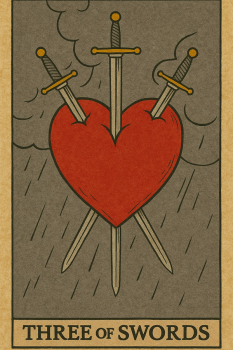
Tarot 101: The Ultimate Beginner’s Guide to Tarot Reading
What is tarot?
Tarot is a symbolic system of illustrated cards used to explore the patterns, stories, and energies shaping your life. Despite common myths about fortune-telling or “dark magic,” tarot is primarily a tool for self-reflection, spiritual growth, and intuitive guidance.
A standard tarot deck contains 78 cards, divided into:
- Major Arcana (22 cards): Archetypal life lessons and spiritual milestones.
- Minor Arcana (56 cards): Everyday experiences, choices, and emotions.
Rather than predicting the future in rigid terms, tarot acts like a mirror of your subconscious—helping you see truths, fears, and opportunities more clearly. Learn more
Why do people read tarot?
Most modern tarot readers don’t see tarot as fortune-telling. Instead, tarot helps with:
- Clarifying choices when life feels uncertain.
- Exploring subconscious drives and motivations.
- Tapping into intuition for deeper understanding.
- Recognizing patterns or lessons in current experiences.
Think of tarot as a symbolic mirror: the images reflect your inner world and spark insights you might otherwise overlook.
What’s in a tarot deck?
The Major Arcana
These 22 cards tell a universal story, beginning with The Fool (innocence, beginnings) and ending with The World (completion, integration). They represent big spiritual themes such as transformation, love, awakening, and endings. Learn more
The Minor Arcana
The Minor Arcana covers day-to-day matters and is divided into four suits, each connected to an element:
- Cups (Water): Emotions, relationships, intuition
- Wands (Fire): Creativity, passion, action
- Swords (Air): Intellect, conflict, truth
- Pentacles (Earth): Money, health, work, the physical world
Each suit includes Aces through Tens (everyday lessons) and Court Cards (Page, Knight, Queen, King) that often represent personalities, roles, or stages of development.
How does a tarot reading work?
A tarot reading involves shuffling the deck, drawing cards, and interpreting them in a spread (a structured layout).
Popular tarot spreads:
- Three-card spread: Past, present, future (or situation, obstacle, advice).
- Celtic Cross: A ten-card spread that dives deep into context, challenges, and guidance. Learn more
Tarot readings combine:
- Traditional meanings of the cards.
- Intuitive impressions from imagery and symbolism.
- Patterns between cards in the spread.
The result isn’t a rigid prophecy—it’s guidance that empowers reflection and decision-making.
What are the most common myths about tarot?
“Tarot is evil or invites dark forces.” Tarot is neutral. The cards reflect your energy and perspective—they don’t summon anything external. Learn more
“You must be psychic to read tarot.” Not true. Anyone can learn tarot. It strengthens your intuition, but you don’t need supernatural abilities. Learn more
“You shouldn’t buy your own deck.” An old superstition. Choosing your own deck ensures the imagery resonates with you—it’s your personal tool for insight. Learn more
How can beginners start learning tarot?
Starting with tarot doesn’t have to feel overwhelming. Here are simple steps to begin:
- Choose a deck you connect with. Popular options include the Rider Waite Tarot, but any deck whose imagery speaks to you will work.
- Pull a daily card. Ask, “What energy should I be aware of today?” Reflect on the card’s meaning. Learn more
- Keep a tarot journal. Record your impressions, traditional meanings, and what happens that day.
- Study gradually. Learn one card per day or explore one suit at a time.
- Trust your intuition. Guidebook definitions are helpful, but your insights are just as valuable.
What makes tarot a tool for self-discovery?
Tarot doesn’t lock you into fate—it empowers you to make conscious choices. The images act like symbolic keys, unlocking awareness of fears, desires, and opportunities.
As one saying goes: “The cards don’t tell you what’s going to happen. They show you what you already know in your heart.”
Tarot is less about predicting the future and more about aligning with your authentic path.
Frequently Asked Questions about Tarot Basics
1. How many cards are in a tarot deck? A standard deck has 78 cards—22 Major Arcana and 56 Minor Arcana.
2. Can anyone learn to read tarot? Yes. Tarot is a skill developed through study and intuition. You don’t need to be psychic.
3. Is tarot dangerous? No. Tarot is a tool for reflection. It carries no inherent danger or dark influence.
4. What’s the difference between oracle and tarot cards? Tarot follows a structured 78-card system. Oracle decks are more freeform and vary in theme, size, and message.
5. What is the best tarot deck for beginners? The Rider Waite Tarot deck is recommended for beginners because of its clear symbolism and widespread resources.
6. How often should I read tarot? As often as feels helpful. Many start with a daily card pull to build intuition and familiarity.
Final Thoughts: Tarot as a Path of Self-Discovery
Tarot is not about fortune-telling or fixed destiny—it’s about reflection, empowerment, and self-discovery. The cards reveal patterns, lessons, and opportunities already present within you, helping you see clearly and make conscious choices.
By exploring tarot, you embark on a lifelong journey of growth, intuition, and transformation.
Related Articles
Your First Tarot Deck Must Be a Gift: Fact or Fiction?
Debunking the myth that your first tarot deck must be a gift—why it’s a superstition, what tarot experts say, and how intention and connection truly matter.
The Ultimate Guide to Daily Tarot Pulls
Discover how daily tarot pulls help you build intuition, gain self-awareness, and learn tarot card meanings. Step-by-step guide, journaling tips, and FAQs.
You Must Be Psychic to Read Tarot: Truth or Total Myth?
Think you must be psychic to read tarot? Total myth. Discover why tarot is really about intuition, self-reflection, and personal growth — and how anyone can learn.